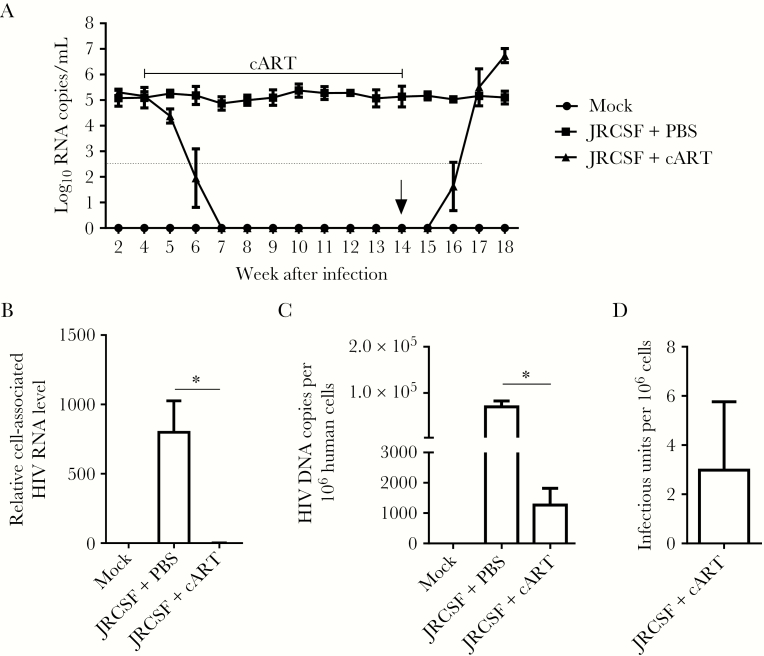Figure 1.
Humanized mice support persistent human immunodeficiency virus type 1 (HIV-1) infection and respond to combination antiretroviral therapy (cART) with cART-resistant HIV-1 reservoirs. Humanized mice were infected with HIV-1JRCSF and started cART 4 weeks after infection. cART was stopped 14 weeks after infection (6 underwent mock infection [mock], 8 underwent HIV-1JRCSF infection and received phosphate-buffered saline [PBS] placebo [JRCSF+PBS], and 8 underwent HIV-1JRCSF infection and received cART [JRCSF+cART]). Several animals (3 in the mock group, 4 in the JRCSF+placebo group, and 4 in the JRCSF+cART group) were euthanized 14 weeks after infection. A, Plasma viral load measured over time. The dotted line indicates the detection limit (400 copies/mL), and “0” on the y-axis indicates that virus was undetected. B, Relative levels of cell-associated HIV-1 RNA in human cells from spleens were quantified by real-time polymerase chain reaction (PCR). C, Cell-associated HIV-1 DNA copies per million human cells in spleen, quantified by real-time PCR. D, Splenic cells producing replication-competent virus were detected by the quantitative virus outgrowth assay. Experiments were repeated twice. Data from each experiment were pooled and summarized. Error bars display standard deviations. *P < .05.

